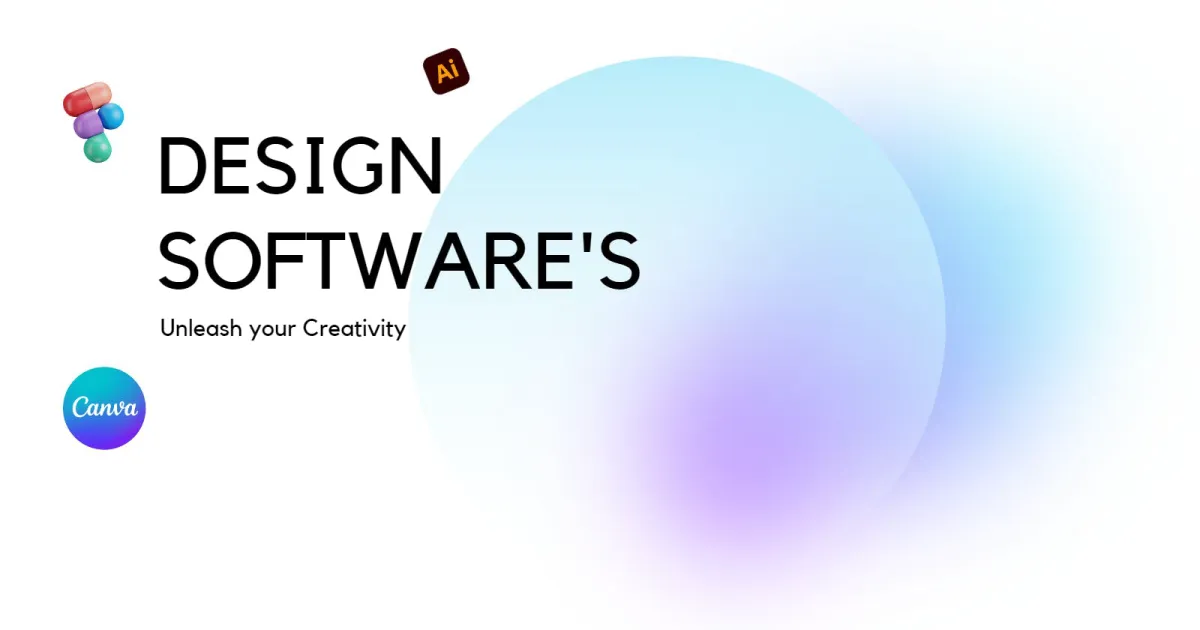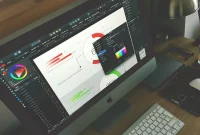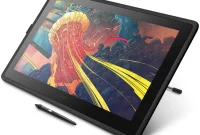Discover the top 10 design software tools that will elevate your creativity to new heights. From graphic design to 3D modeling, these programs offer powerful features to bring your ideas to life.
Adobe Photoshop

Considered the industry standard for raster image editing, Adobe Photoshop is a powerhouse for designers of all levels. Whether you’re a seasoned professional or just starting your creative journey, Photoshop offers an unparalleled toolkit to bring your visions to life.
Key Features:
- Comprehensive Image Editing: From basic adjustments like cropping and color correction to advanced techniques like frequency separation and content-aware fill, Photoshop gives you granular control over every pixel.
- Digital Painting and Drawing: With a vast array of brushes, textures, and blending modes, Photoshop empowers you to create stunning digital paintings and illustrations.
- Graphic Design Capabilities: Design logos, brochures, social media graphics, and more with Photoshop’s robust typography, vector tools, and layer styles.
- Photo Manipulation and Compositing: Seamlessly combine multiple images, add realistic effects, and retouch photos with ease.
- Adobe Creative Cloud Integration: Photoshop integrates flawlessly with other Creative Cloud applications like Lightroom, Illustrator, and After Effects, streamlining your workflow.
CorelDRAW Graphics Suite
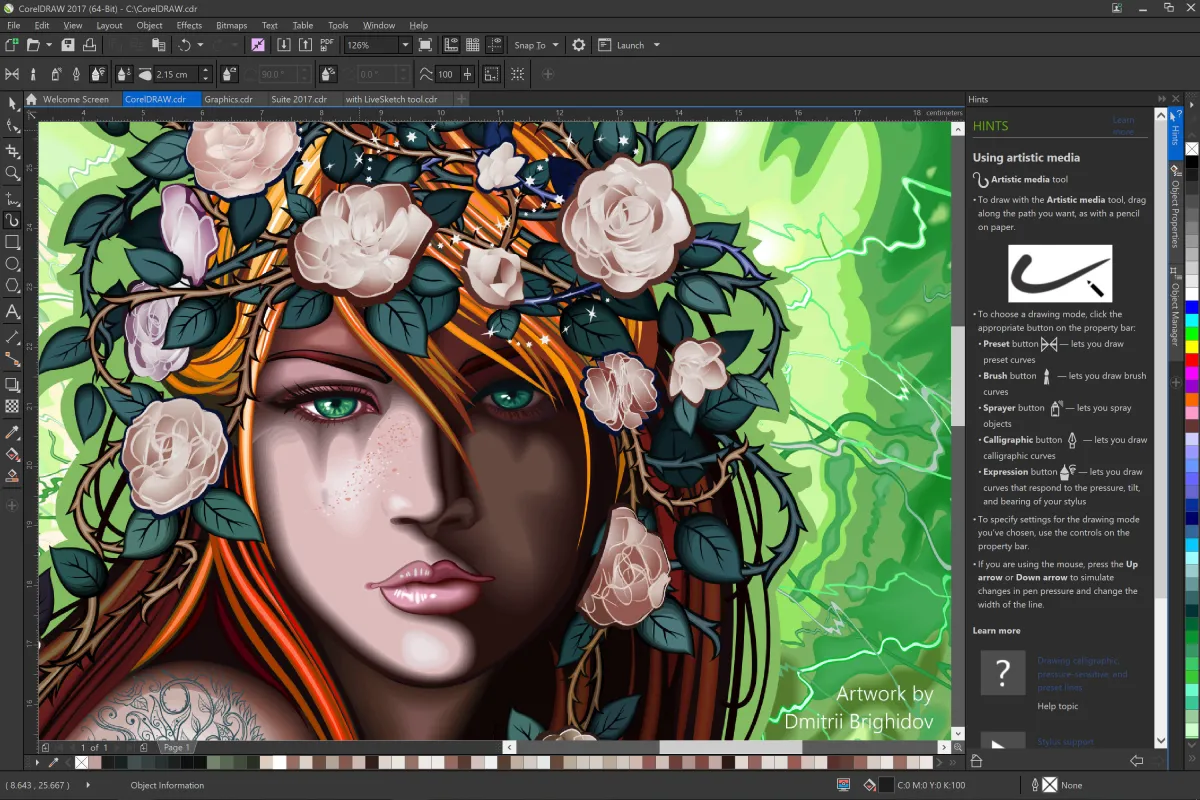
CorelDRAW Graphics Suite is a powerful and versatile vector graphics editor that has been a staple in the design industry for decades. Renowned for its precision and comprehensive toolset, CorelDRAW is an excellent choice for a wide range of design tasks, including:
- Logo design
- Illustration
- Typography
- Layout and page design
- Web graphics
Whether you’re a seasoned professional or just starting, CorelDRAW offers a user-friendly interface and a plethora of features to bring your creative visions to life.
Key Features:
- Precision vector editing: Create and manipulate complex shapes and curves with ease, ensuring crisp, scalable graphics.
- Extensive typography tools: Access a vast library of fonts, create custom typefaces, and fine-tune text with advanced typographic controls.
- Professional color management: Ensure color accuracy across different media with advanced color management tools.
- Versatile file compatibility: Work seamlessly with a wide range of file formats, ensuring compatibility with other design software.
- Robust learning resources: Take advantage of comprehensive tutorials, webinars, and a supportive community to master CorelDRAW’s features.
Affinity Designer
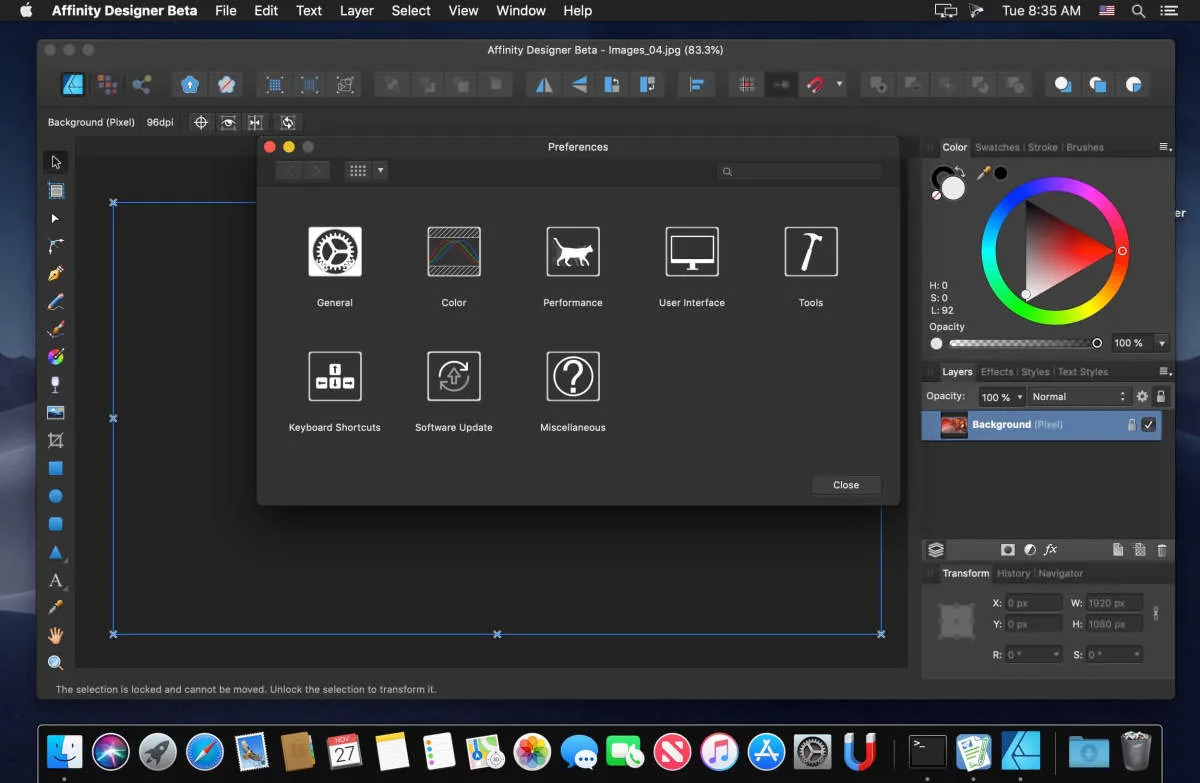
Affinity Designer is a vector graphic design software that has been gaining popularity as a powerful and affordable alternative to Adobe Illustrator. It offers a comprehensive set of tools for creating illustrations, logos, icons, typography, and more.
Key Features:
- Intuitive Interface: Affinity Designer boasts a clean and customizable interface that is easy to navigate, even for beginners.
- Precision Tools: Create pixel-perfect designs with its advanced pen tool, shape tools, and boolean operations.
- Seamless Vector Editing: Easily manipulate and adjust vector objects with its non-destructive editing capabilities.
- Professional Color Management: Ensure accurate color representation across different devices and platforms.
- File Compatibility: Supports various file formats, including AI, PSD, PDF, SVG, and EPS.
Affinity Designer is an excellent option for both professionals and aspiring designers seeking a robust vector design software with a more affordable pricing model compared to its competitors.
Sketch

Sketch is a vector-based design tool exclusively for Mac users. It’s praised for its intuitive interface and robust features, making it a favorite for UI/UX designers crafting websites, mobile apps, and icons.
Key Features:
- Vector Editing: Create scalable designs without losing quality.
- Symbols and Libraries: Reuse design elements across your project for consistency.
- Prototyping: Build interactive prototypes to visualize user flow.
- Collaboration: Work with your team seamlessly using Sketch’s collaborative features.
- Plugins & Integrations: Extend Sketch’s functionality with a vast library of plugins.
While limited to macOS, Sketch’s powerful features and user-friendly environment make it a top contender for design professionals.
Canva Pro
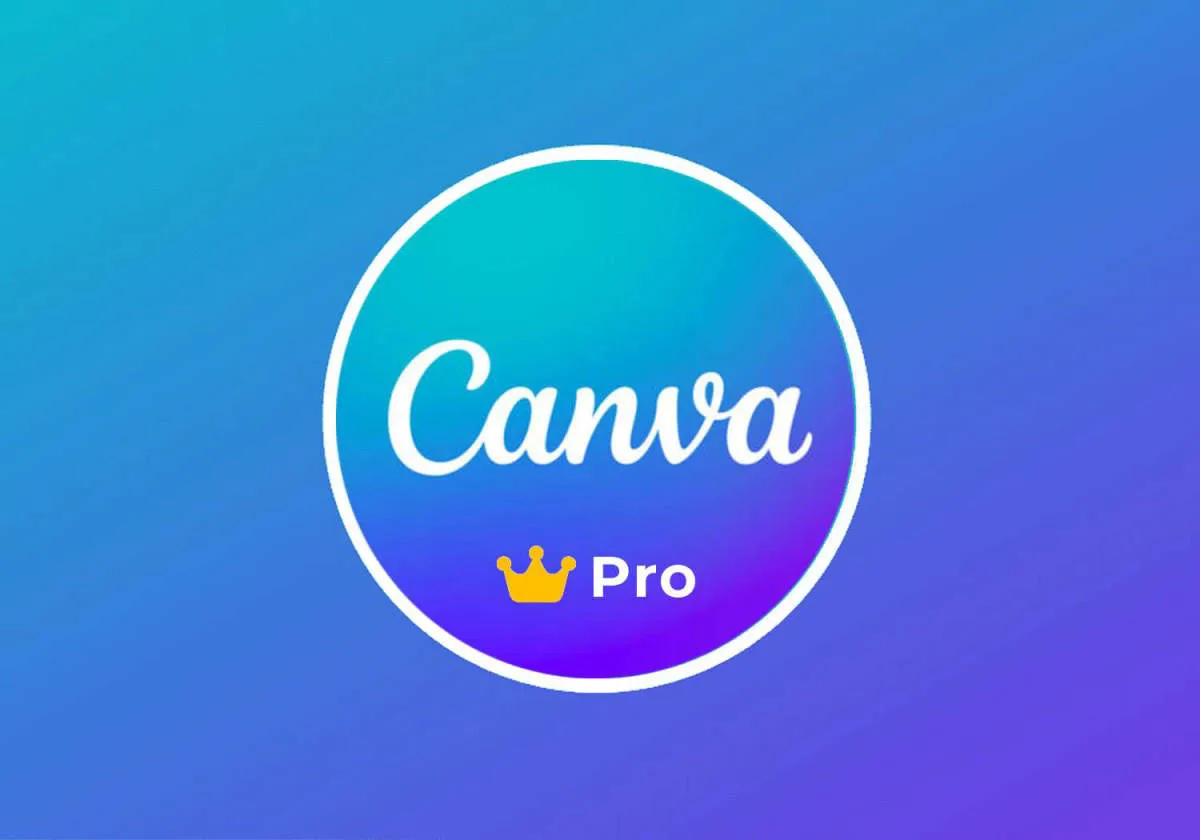
Canva is already a powerhouse for design novices, but Canva Pro takes it up a notch, catering to professionals and businesses. While the free version is undeniably generous, Canva Pro unlocks a treasure chest of premium features:
Key Features:
- Massive Stock Library: Access millions of high-resolution photos, videos, illustrations, and audio tracks.
- Brand Kit: Store your brand colors, logos, and fonts for consistent branding across all designs.
- Content Planner: Schedule and organize your social media posts directly from Canva.
- Background Remover: Effortlessly remove image backgrounds with a single click.
- Magic Resize: Instantly resize your designs for different social media platforms.
- Team Collaboration: Work on projects seamlessly with team members in real-time.
Canva Pro is a versatile tool for creating social media graphics, presentations, marketing materials, and more. Its user-friendly interface and extensive library make it perfect for both design beginners and experienced creatives looking for efficiency and convenience.
Figma

Figma is a cloud-based design and prototyping tool that has taken the design world by storm. Its collaborative features, intuitive interface, and powerful capabilities make it a favorite among individual designers and large teams.
Key Features:
- Real-time Collaboration: Multiple designers can work on the same file simultaneously, fostering teamwork and speeding up the design process.
- Web-Based Platform: No need for downloads or installations. Access your designs from any device with an internet connection.
- Prototyping: Create interactive prototypes to simulate user flows and test the functionality of your designs.
- Design Systems: Build and maintain consistent design systems with reusable components, styles, and libraries.
- Vector Networks: Figma’s vector-based design tools offer precision and flexibility for creating high-quality visuals.
Figma is an excellent choice for designers of all levels, from beginners to experienced professionals. Its free plan provides ample features for individuals and small teams, while its paid plans offer advanced collaboration and administrative tools for larger organizations.
Adobe Illustrator
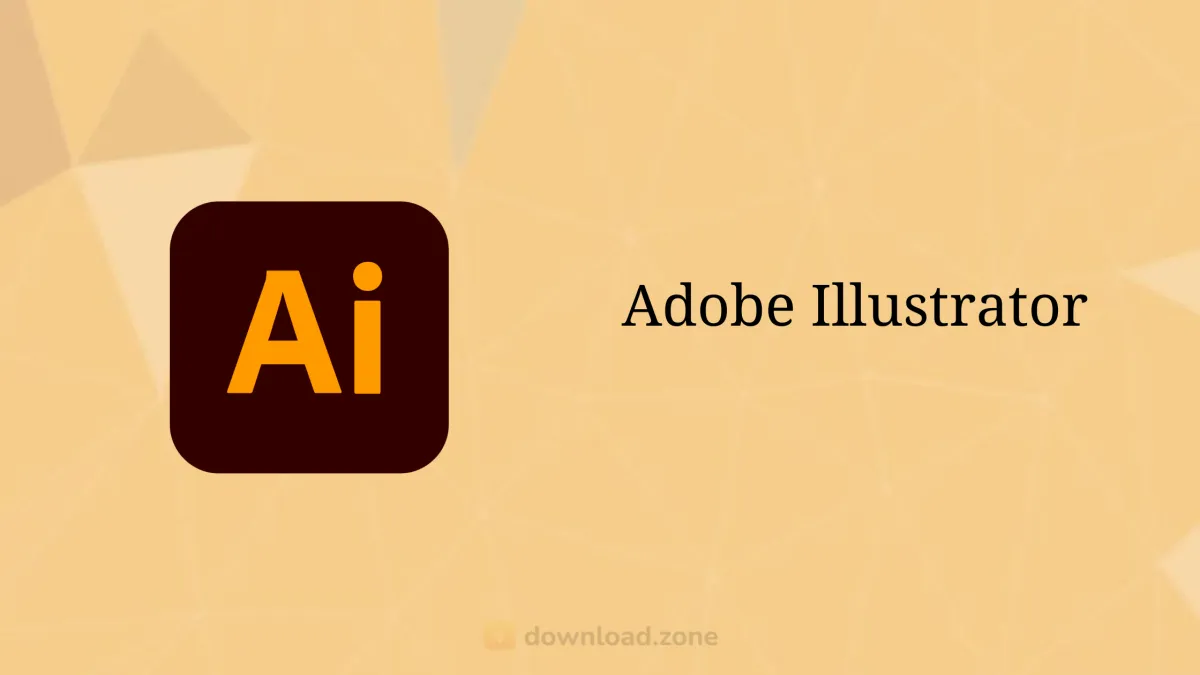
When it comes to vector-based design, Adobe Illustrator reigns supreme. This industry-standard software is a must-have for professional designers across various disciplines, including graphic design, logo creation, illustration, and typography.
Key Features:
- Vector Editing: Create and manipulate scalable graphics that retain their quality at any size, ensuring crisp lines and sharp details for print, web, or any other medium.
- Comprehensive Toolset: Access a vast array of tools for drawing, painting, typing, shaping, and manipulating objects, empowering you with limitless creative possibilities.
- Color Control: Achieve precise color accuracy with advanced color management tools, including support for various color models (CMYK, RGB, etc.) and Pantone Matching System (PMS) colors.
- Typography Features: Craft stunning typography with a wide range of fonts, advanced typographic controls, and tools for creating custom typefaces.
- Seamless Integration: Work seamlessly with other Adobe Creative Cloud applications, such as Photoshop and InDesign, streamlining your workflow and enhancing collaboration.
Whether you’re a seasoned professional or an aspiring designer, Adobe Illustrator provides the tools and features you need to bring your creative visions to life with precision and artistry.
Inkscape
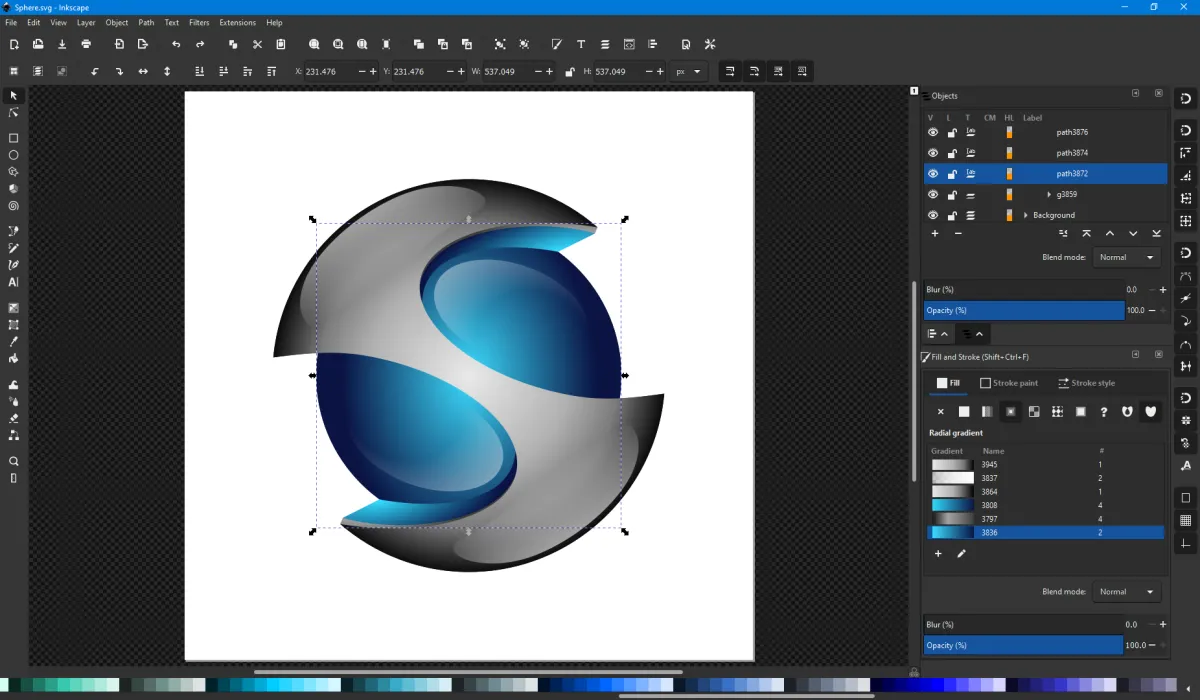
For designers seeking a powerful and free vector graphics editor, Inkscape is an excellent choice. This open-source software rivals premium options in terms of features and capabilities, making it a popular option for both hobbyists and professionals.
Key Features:
- Scalable Vector Graphics (SVG) Native: Design with infinitely scalable graphics, ensuring crisp lines and sharp edges at any size.
- Extensive Drawing Tools: Access a wide range of tools for creating paths, curves, shapes, and freehand drawings.
- Powerful Text Handling: Add and edit text with ease, utilizing various formatting options and text-on-path capabilities.
- Object Manipulation: Group, layer, and transform objects with precision using alignment tools and snapping options.
- Wide File Format Support: Import and export designs in various formats, including SVG, PNG, PDF, and more.
Inkscape’s active community and wealth of online resources make it easy to find tutorials, inspiration, and support. Its intuitive interface and comprehensive features empower users to create stunning illustrations, logos, icons, web graphics, and more.
Gravit Designer
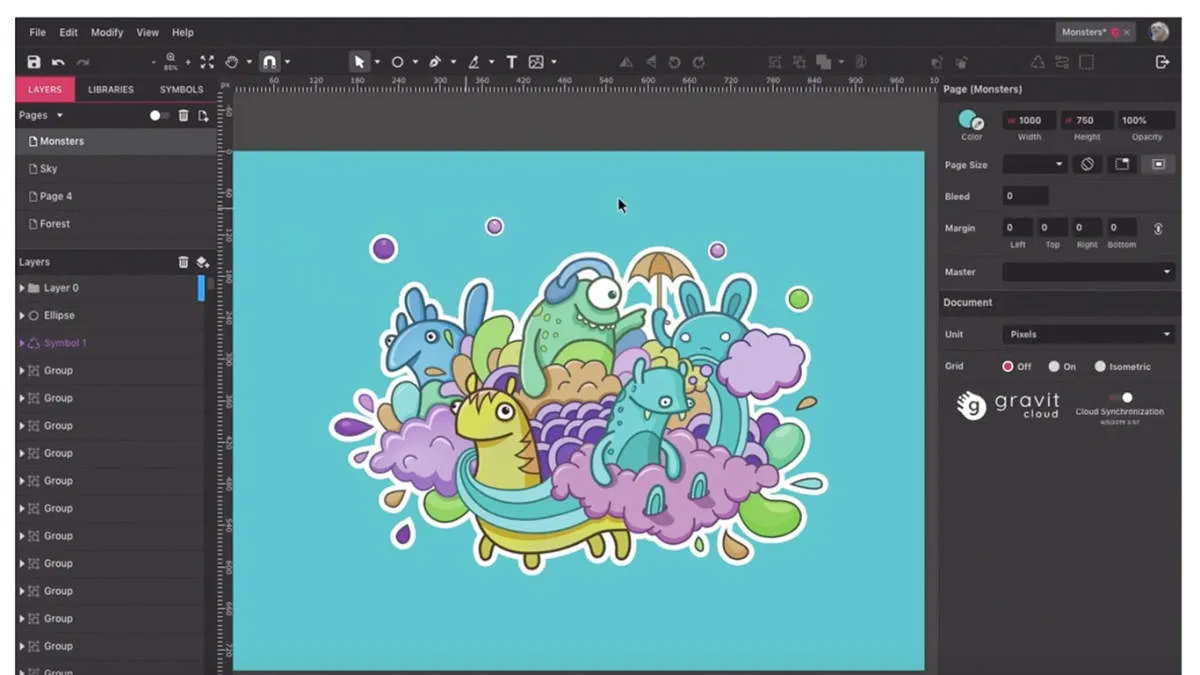
Gravit Designer is a powerful vector graphics editor that’s available for free, both online and offline, across multiple platforms. It’s a great option for both beginners and experienced designers, thanks to its intuitive interface and comprehensive set of features.
Key Features:
- Intuitive Interface: Gravit Designer boasts a clean and well-organized interface, making it easy for users to find the tools they need.
- Vector Editing Tools: Create and manipulate vector graphics with precision using a wide range of tools, including pen, bezier curve, freehand drawing, and shape tools.
- Typography Features: Access a vast library of Google Fonts and enjoy advanced typography controls for text manipulation and styling.
- Cross-Platform Compatibility: Work seamlessly across Windows, Mac, Linux, ChromeOS, and even directly in your browser. Your files are synced automatically across your devices.
- Multiple Design Capabilities: Gravit Designer is versatile enough for various design tasks, from logo design and web graphics to presentations and social media content.
Who should consider Gravit Designer? Anyone who needs a powerful yet user-friendly vector graphics editor, especially if they value cross-platform accessibility and a free price point. It’s a strong contender for both personal and professional projects.
Blender

Don’t let its open-source nature fool you; Blender is a powerhouse for 3D creation, standing toe-to-toe with industry giants. Its free availability makes it an incredibly accessible choice for both aspiring and seasoned designers.
Key Features:
- Comprehensive 3D modeling, sculpting, and texturing tools
- Powerful animation and rigging system for bringing characters and objects to life
- Built-in rendering engine for producing stunning photorealistic imagery
- Node-based material editor for creating complex and customizable materials
- Extensive simulation capabilities for cloth, fluid, smoke, and more
Why Choose Blender?
Blender’s versatility is unmatched. Whether you’re interested in creating video game assets, animated films, architectural visualizations, or even sculpting digital art, Blender has the tools to realize your vision. The active online community provides a wealth of tutorials and support, ensuring you’re never stuck on your creative journey.
Conclusion
Choosing the right design software is crucial for unleashing your creativity. Explore the top 10 tools mentioned to enhance your design projects.

